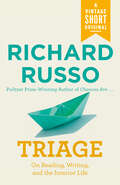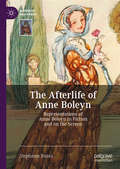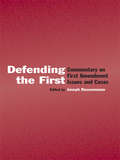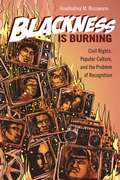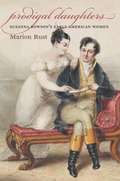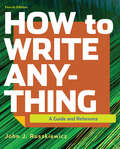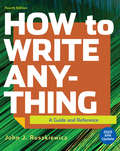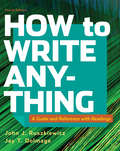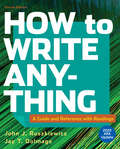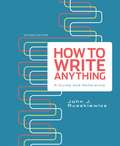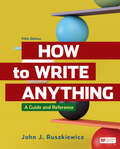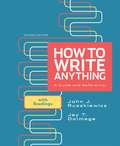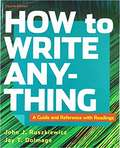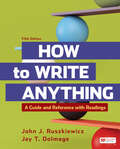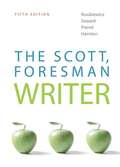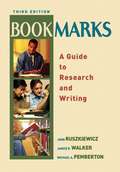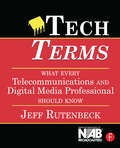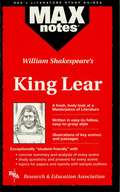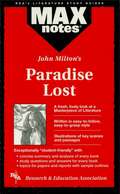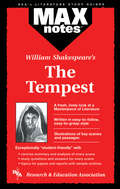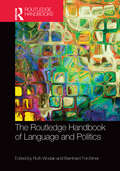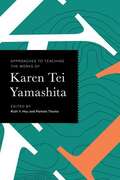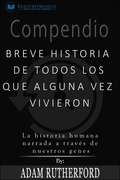- Table View
- List View
Triage: On Reading, Writing, and the Interior Life (A Vintage Short)
by Richard RussoA Vintage Shorts Nonfiction Original One of the most valuable spaces for an artist is the inner life—the sacred place where, outside of the constraints of time and space, meaning is extracted from raw experience and fashioned into art. In this timely new essay, Pulitzer Prize-winning author Richard Russo discusses the work writers do as they sift through experience and work to cultivate rich interior lives. For authors, this often involves performing triage, a constant assessment of events that helps determine what&’s useful for a story and potentially enduring. But what is at stake when we perform triage? Is an artist&’s interior life an act of generosity or selfishness? Reflecting on a year of reading and meditations on the nature of interiority brought up by a global pandemic and orders to stay at home, Triage is a candid and arresting look at the process that goes into creative work, by one of our most celebrated and bestselling novelists. An ebook short.
The Afterlife of Anne Boleyn: Representations of Anne Boleyn in Fiction and on the Screen (Queenship and Power)
by Stephanie RussoThis book explores 500 years of poetry, drama, novels, television and films about Anne Boleyn. Hundreds of writers across the centuries have been drawn to reimagine the story of her rise and fall. The Afterlife of Anne Boleyn tells the story of centuries of these shifting and often contradictory ways of understanding the narrative of Henry VIII’s most infamous queen. Since her execution on 19 May 1536, Anne’s life and body has been a site upon which competing religious, political and sexual ideologies have been inscribed; a practice that continues to this day. From the poetry of Thomas Wyatt to the songs of the hit pop musical Six, The Afterlife of Anne Boleyn takes as its central contention the belief that the mythology that surrounds Anne Boleyn is as interesting, revealing, and surprising as the woman herself.
Cambridge Studies in Medieval Literature: The Evolution of Verse Structure in Old and Middle English Poetry
by Geoffrey RussomIn this fascinating study, Geoffrey Russom traces the evolution of the major English poetic traditions by reference to the evolution of the English language, and considers how verse forms are born, how they evolve, and why they die. Using a general theory of poetic form employing universal principles rooted in the human language faculty, Russom argues that certain kinds of poetry tend to arise spontaneously in languages with identifiable characteristics. Language changes may require modification of metrical rules and may eventually lead to extinction of a meter. Russom's theory is applied to explain the development of English meters from the earliest alliterative poems in Old and Middle English and the transition to iambic meter in the Modern English period. This thorough yet accessible study provides detailed analyses of form in key poems, including Beowulf and Sir Gawain and the Green Knight, and a glossary of technical terms.
Defending the First: Commentary on First Amendment Issues and Cases (Routledge Communication Series)
by Joseph RussomannoDefending the First provides a collection of new perspectives on the First Amendment in legal and communication contexts. Editor Joseph Russomanno brings together a roster of major figures who have participated in the shaping of First Amendment law over the past 30 years. Readers are taken into a realm of personal experience and analysis through the stories of these attorneys at the forefront of the battle to defend the "First." The contributors to this volume--all of whom have argued cases before the Supreme Court--tell about their experiences appearing before the highest court in the United States. Some write many years after being there, while others offer insights from a more recent vantage point. One Supreme Court Attorney offers a historical analysis of a case replete with a variety of First Amendment issues.This work contributes to a deeper understanding of First Amendment issues and the types of expression that the First Amendment protects, and why these rights must be protected. In addition, it provides readers with the unique perspective of those who have been on the front lines of some of the most important and influential cases in this era. The challenges of presenting an argument in this venue become clear, and it is evident that understanding one's own case, its lineage, and its likely impact all become part of the formula for success.This distinctive collection provides personal and compelling insights into the making of communication law, and it will be engaging reading for students in communication law courses. It will also appeal to any reader interested in First Amendment law.
Blackness Is Burning: Civil Rights, Popular Culture, and the Problem of Recognition (Contemporary Approaches to Film and Media Series)
by Treaandrea M. RusswormBlackness Is Burning is one of the first books to examine the ways race and psychological rhetoric collided in the public and popular culture of the civil rights era. In analyzing a range of media forms, including Sidney Poitier’s popular films, black mother and daughter family melodramas, Bill Cosby’s comedy routine and cartoon Fat Albert, pulpy black pimp narratives, and several aspects of post–civil rights black/American culture, TreaAndrea M. Russworm identifies and problematizes the many ways in which psychoanalytic culture has functioned as a governing racial ideology that is built around a flawed understanding of trying to “recognize” the racial other as human. The main argument of Blackness Is Burning is that humanizing, or trying to represent in narrative and popular culture that #BlackLivesMatter, has long been barely attainable and impossible to sustain cultural agenda. But Blackness Is Burning makes two additional interdisciplinary interventions: the book makes a historical and temporal intervention because Russworm is committed to showing the relationship between civil rights discourses on theories of recognition and how we continue to represent and talk about race today. The book also makes a formal intervention since the chapter-length case studies take seemingly banal popular forms seriously. She argues that the popular forms and disreputable works are integral parts of our shared cultural knowledge. Blackness Is Burning’s interdisciplinary reach is what makes it a vital component to nearly any scholar’s library, particularly those with an interest in African American popular culture, film and media studies, or psychoanalytic theory.
Prodigal Daughters
by Marion RustSusanna Rowson--novelist, actress, playwright, poet, school founder, and early national celebrity--bears little resemblance to the title character in her most famous creation, Charlotte Temple. Yet this best-selling novel has long been perceived as the prime exemplar of female passivity and subjugation in the early Republic. Marion Rust disrupts this view by placing the novel in the context of Rowson's life and other writings. Rust shows how an early form of American sentimentalism mediated the constantly shifting balance between autonomy and submission that is key to understanding both Rowson's work and the lives of early American women. Rust proposes that Rowson found a wide female audience in the young Republic because she articulated meaningful female agency without sacrificing accountability to authority, a particularly useful skill in a nation that idealized womanhood while denying women the most basic rights. Rowson, herself an expert at personal reinvention, invited her readers, theatrical audiences, and students to value carefully crafted female self-presentation as an instrument for the attainment of greater influence. Prodigal Daughters demonstrates some of the ways in which literature and lived experience overlapped, especially for women trying to find room for themselves in an increasingly hostile public arena.
How to Write Anything: A Guide And Reference
by John RuszkiewiczInstructors at hundreds of colleges and universities have turned to How to Write Anything for clear, focused writing advice that gives students just what they need, when they need it. And students love it―because John Ruszkiewicz’s tone makes writing in any genre approachable, with a flexible, rhetorical framework for a range of common academic and real-world genres, and a reference with extra support for writing, research, design, style, and grammar.
How to Write Anything?: A Guide And Reference
by John Ruszkiewicz Jay DolmageInstructors at hundreds of colleges and universities have turned to How to Write Anything for clear, focused writing advice that gives students just what they need, when they need it. And students love it―because John Ruszkiewicz’s tone makes writing in any genre approachable, with a flexible, rhetorical framework for a range of common academic and real-world genres, and a reference with extra support for writing, research, design, style, and grammar.
How to Write Anything: A Guide and Reference (Second Edition)
by John J. RuszkiewiczDesigned to be clear and simple, How to Write Anything combines the thoughtfulness of rhetorics with the efficiency of brief handbooks. Through memorable visuals and honest talk, John Ruszkiewicz shows students how to write in any situation -- wherever they are in their writing process. With everything you need to teach composition, the Guide lays out focused advice for writing common genres, while the Reference covers the range of writing and research skills that students need as they work across genres and disciplines. An intuitive, visual cross-referencing system and a modular chapter organization that' s simple to follow make it even easier for students to work back and forth between chapters and stay focused on their own writing.
How to Write Anything: A Guide and Reference
by John J. RuszkiewiczHow to Write Anything supports students with practical advice for all kinds of writing. The easy-to-follow rhetorical sequence, generous examples, and accessible tone empower students to write in any genre, both in class and in the workplace.
How To Write Anything: A Guide and Reference with Readings
by John J. Ruszkiewicz Jay T. DolmageHow to Write Anything supports students wherever they are in their writing process. Designed to be clear and simple, the Guide lays out focused advice for writing common academic and real-world genres, while the Reference covers the range of writing skills that students needs as they work across genres and disciplines. Genre-based readings -- including narratives, reports, arguments, evaluations, proposals and rhetorical, causal, and literary analyses -- are sure to engage students and inspire ideas. The result is everything you need to teach composition in a flexible, highly visual guide, reference and reader. This new edition gives students more support for academic writing, more help choosing and working with genres, and more emphasis on multimodal composing.
How To Write Anything With Readings: A Guide And Reference
by John J. Ruszkiewicz Jay T. DolmageInstructors at hundreds of colleges and universities have turned to How to Write Anything for support that empowers every student with advice they need, when they need it. And students love it--holding onto the book for other classes --because the authors' tone makes writing in any genre approachable, with a flexible, rhetorical framework for the most commonly taught academic and public genres. <P><P> The fourth edition offers students a new Part 1: Strategies for College Writing, even more support for understanding genres and purpose, and an expanded and thoroughly revised take on grammar, mechanics, and usage--all essential to academic success. The result is everything you need to teach composition in a flexible and highly visual guide, reference, handbook, and reader. <P><P> Also available: LaunchPad, an online course space with pre-built units featuring the full e-book, book-specific reading comprehension quizzes, adaptive LearningCurve activities to help students hone their understanding of reading and writing, and additional support in A Student's Companion to How to Write Anything.
How to Write Anything with Readings: A Guide and Reference
by John J. Ruszkiewicz Jay T. DolmageHow to Write Anything supports students with practical advice for all kinds of writing. The easy-to-follow rhetorical sequence, generous examples, and accessible tone empower students to write in any genre, both in class and in the workplace.
The Scott, Foresman Writer (5th Edition)
by John Ruszkiewicz Daniel E. Seward Christy Friend et alKnown for its innovative coverage of argument, in its fifth edition the SF Writer continues to offer writers the most innovative support in documentation, visual rhetoric and applying writing beyond the composition classroom. This is the brief handbook that reflects where the field is going, and provides students with the solutions they will use to strengthen their writing in college and beyond.
Bookmarks: A Guide to Research and Writing (3rd edition)
by John Ruszkiewicz Janice R. Walker Michael A. PembertonPreparing students for the ever-changing demands of conducting research in today's world, Bookmarks: A Guide to Research and Writing establishes a new benchmark for college research guides, serving as a bridge between old and new traditions for researchers who expect to work regularly in both print and electronic environments. Written in a lively, conversational tone, Bookmarks: A Guide to Writing and Research, offers concrete strategies and models to help students select a topic, refine it, and develop it into a full-fledged research hypothesis; find and position sources; use sources in appropriate and responsible ways to further their projects; and document and complete their final projects for print or electronic publication. In addition to offering such practical advice, the text also asks students to consider important rhetorical issues, such as how to most effectively address an audience and how to craft a considered, balanced argument. Bookmarks encourages students to use new technologies to find reliable information and to use the technologies to locate sources that are most appropriate for their topics and purposes.
Tech Terms: What Every Telecommunications and Digital Media Professional Should Know
by Jeff RutenbeckAn avalanche of acronyms, terms-of-art, buzz words, and short-hand phraseology confronts today's busy communications professionals. Now in its 3rd edition, Tech Terms is an invaluable learning tool to help grasp key aspects of the television and video, PC hardware and software markets, multimedia authoring tools, and the exploding wireless Internet and mobile telecomputing worlds. With more than 1000 terms described in four sentences or less, Tech Terms is perfect the perfect desk reference.
King Lear (MAXNotes Literature Guides)
by Corinna RuthREA's MAXnotes for William Shakespeare's King Lear The MAXnotes offers a comprehensive summary and analysis of King Lear and a biography of William Shakespeare. Places the events of the play in historical context and discusses each act in detail. Includes study questions and answers along with topics for papers and sample outlines.
Paradise Lost (MAXNotes Literature Guides)
by Corinna RuthREA's MAXnotes for John Milton's Paradise Lost MAXnotes offer a fresh look at masterpieces of literature, presented in a lively and interesting fashion. Written by literary experts who currently teach the subject, MAXnotes will enhance your understanding and enjoyment of the work. MAXnotes are designed to stimulate independent thought about the literary work by raising various issues and thought-provoking ideas and questions. MAXnotes cover the essentials of what one should know about each work, including an overall summary, character lists, an explanation and discussion of the plot, the work's historical context, illustrations to convey the mood of the work, and a biography of the author. Each chapter is individually summarized and analyzed, and has study questions and answers.
Tempest, The (MAXnotes Literature Guides)
by Corinna Siebert RuthREA's MAXnotes for William Shakespeare's The Tempest The MAXnotes offers a comprehensive summary and analysis of The Tempest and a biography of William Shakespeare. Places the events of the play in historical context and discusses each act in detail. Includes study questions and answers along with topics for papers and sample outlines.
Medieval Shakespeare
by Ruth Morse Helen Cooper Peter Holland Ruth Morse Helen CooperMedieval culture pervaded Shakespeare’s life and work, from his childhood, spent within reach of the last performances of the Coventry Corpus Christi plays, to his dramatization of Chaucer in The Two Noble Kinsmen three years before his death. The world he lived in was still largely a medieval one, in its topography and its institutions. The language he spoke had been forged over the centuries since the Norman Conquest. The genres in which he wrote, not least historical tragedy, love-comedy and romance, were medieval inventions. A high proportion of his plays have medieval origins and he kept returning to Chaucer, acknowledged as the greatest poet in the English language. Above all, he grew up with an English tradition of drama developed during the Middle Ages that assumed that it was possible to stage anything – all time, all space. Helen Cooper’s book looks at the role of all these continuations of medieval culture in enabling Shakespeare to become the world’s greatest playwright. Shakespeare and the Medieval World provides a panoramic overview that opens up new vistas within his work and uncovers the richness of his inheritance.
The Routledge Handbook of Language and Politics (Routledge Handbooks in Linguistics)
by Ruth Wodak and Bernhard ForchtnerThe Routledge Handbook of Language and Politics provides a comprehensive overview of this important and dynamic area of study and research. Language is indispensable to initiating, justifying, legitimatising and coordinating action as well as negotiating conflict and, as such, is intrinsically linked to the area of politics. With 45 chapters written by leading scholars from around the world, this Handbook covers the following key areas: Overviews of the most influential theoretical approaches, including Bourdieu, Foucault, Habermas and Marx; Methodological approaches to language and politics, covering – among others – content analysis, conversation analysis, multimodal analysis and narrative analysis; Genres of political action from speech-making and policy to national anthems and billboards; Cutting-edge case studies about hot-topic socio-political phenomena, such as ageing, social class, gendered politics and populism. The Routledge Handbook of Language and Politics is a vibrant survey of this key field and is essential reading for advanced students and researchers studying language and politics.
Approaches to Teaching the Works of Karen Tei Yamashita (Approaches to Teaching World Literature #168)
by Ruth Y. Hsu and Pamela ThomaStructurally innovative and culturally expansive, the works of Karen Tei Yamashita invite readers to rethink conventional paradigms of genres and national traditions. Her novels, plays, and other texts refashion forms like the immigrant tale, the postmodern novel, magical realism, apocalyptic literature, and the picaresque and suggest new transnational, hemispheric, and global frameworks for interpreting Asian American literature.Addressing courses in American studies, contemporary fiction, environmental humanities, and literary theory, the essays in this volume are written by undergraduate and graduate instructors from across the United States and around the globe. Part 1, "Materials," outlines Yamashita's novels and other texts, key works of criticism and theory, and resources for Asian American and Asian Brazilian literature and culture. Part 2, "Approaches," provides options for exploring Yamashita's works through teaching historical debates, outlining principles of environmental justice, mapping geographic boundaries to highlight power dynamics, and drawing personal connections to the texts. Additionally, an essay by Yamashita describes her own approaches to teaching creative writing.
Compendio: La historia humana narrada a través de nuestros genes
by Adam RutherfordEl poder del ADN y la información que contiene, son inmensos. Imagine usar esa información para descubrir nuestro pasado. En nuestros genomas, cada uno de nosotros llevamos la historia de nuestra especie: nacimientos, fallecimientos, enfermedades, guerra, hambruna, migración y sexo. Somos mucho más que nuestro ADN, pero este contiene la llave de nuestro pasado. "Esta es una historia acerca de usted. Trata sobre la historia de quién es usted y cómo llegó a ser lo que es" - Adam Rutherford.
